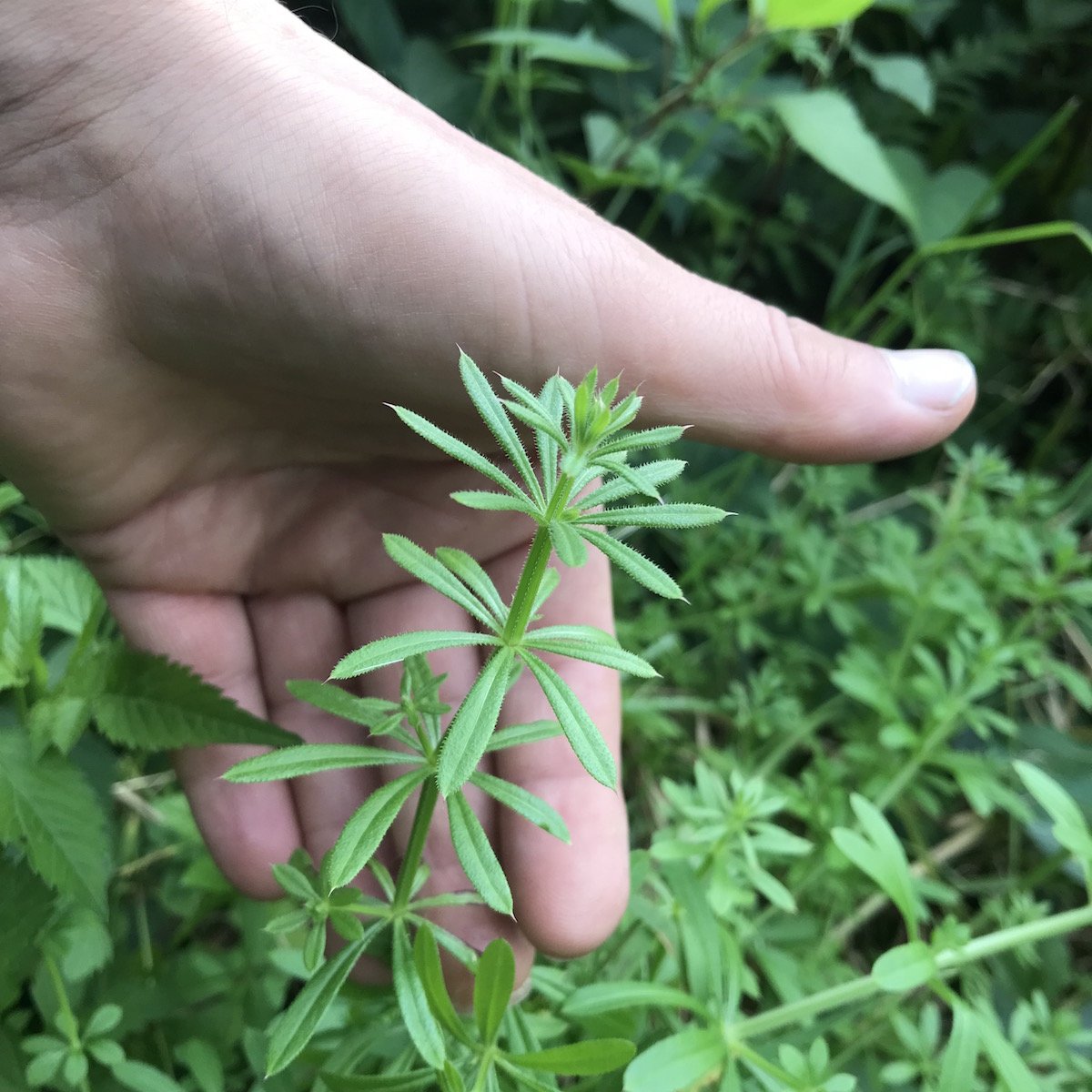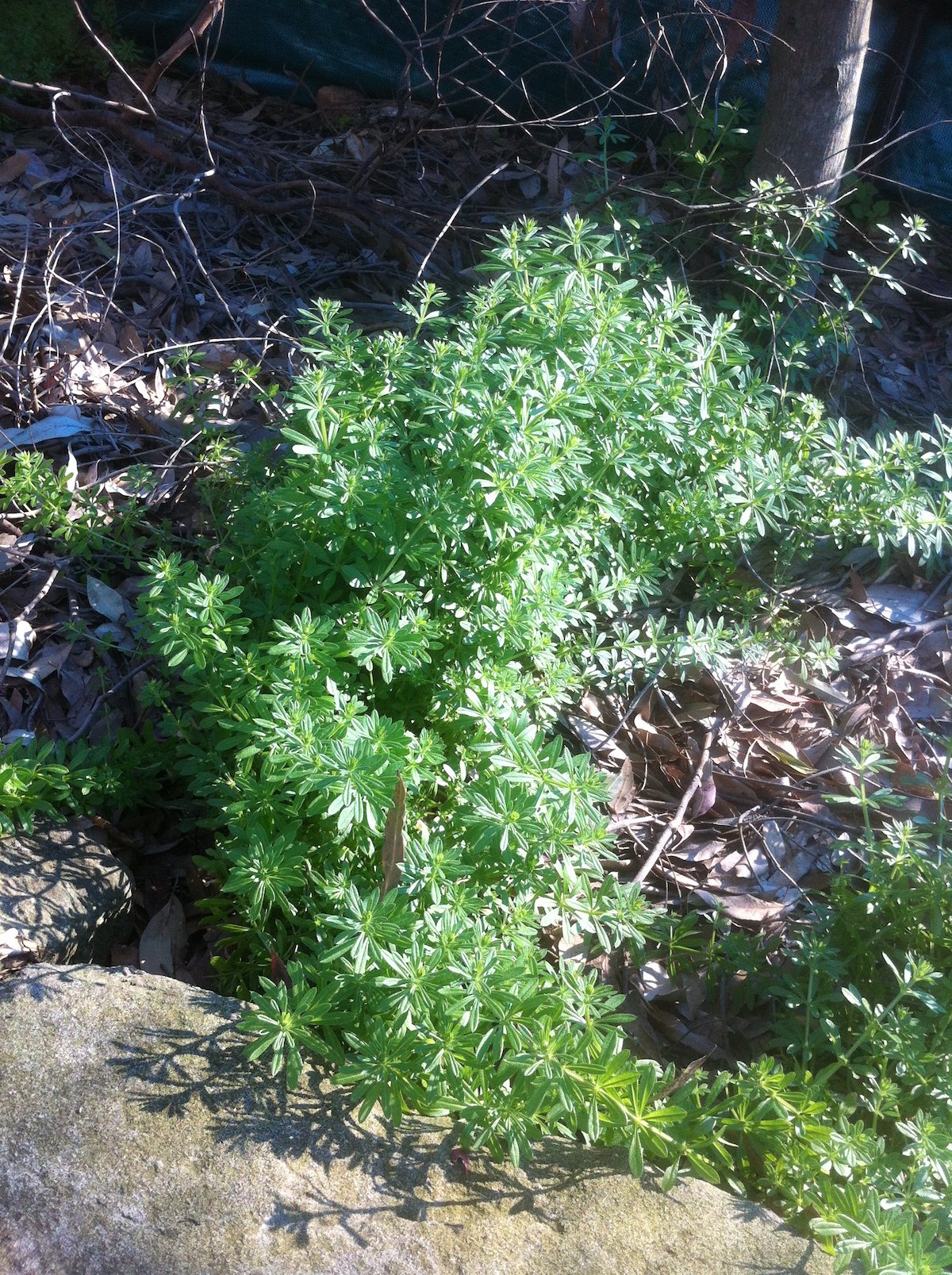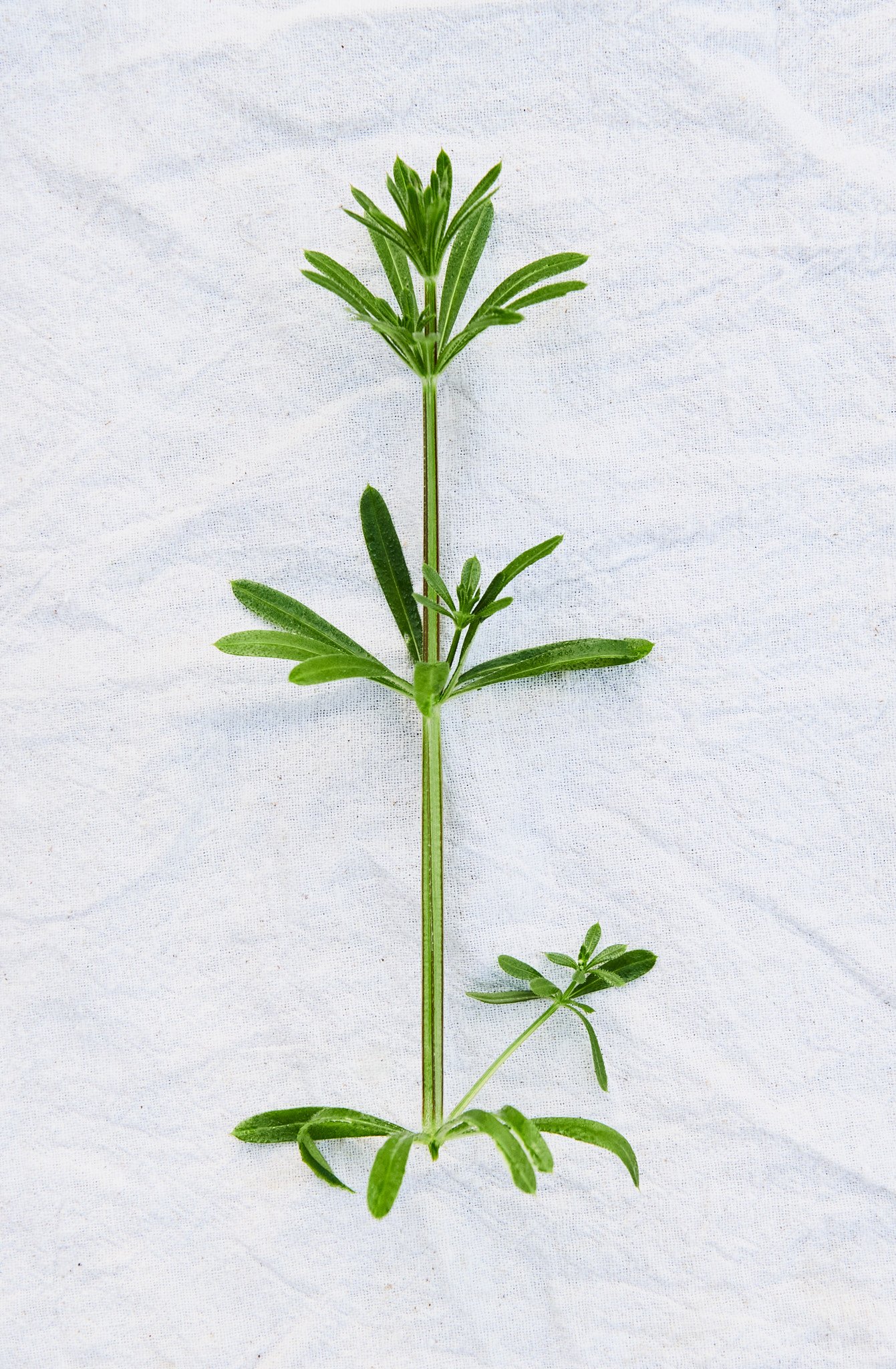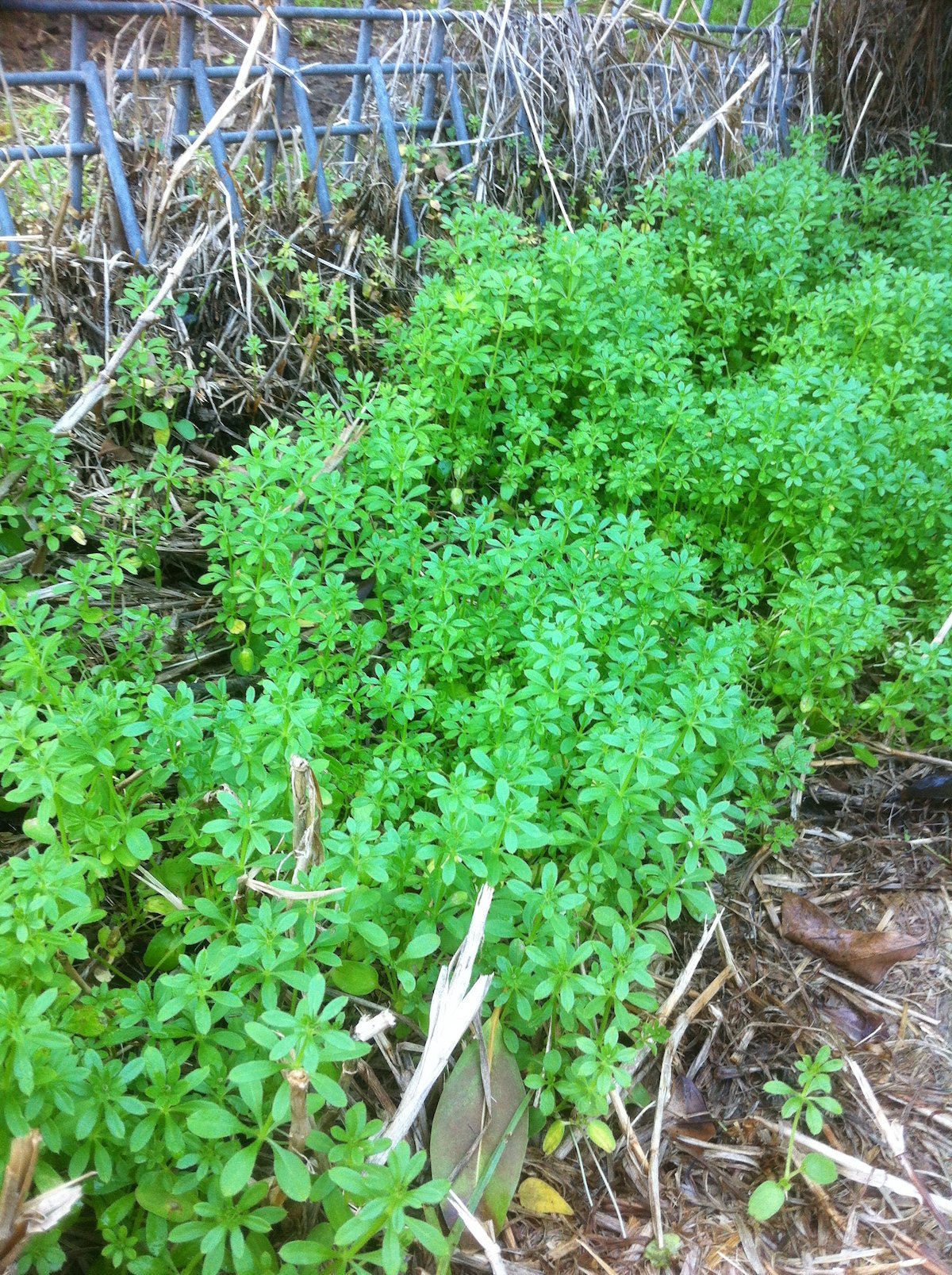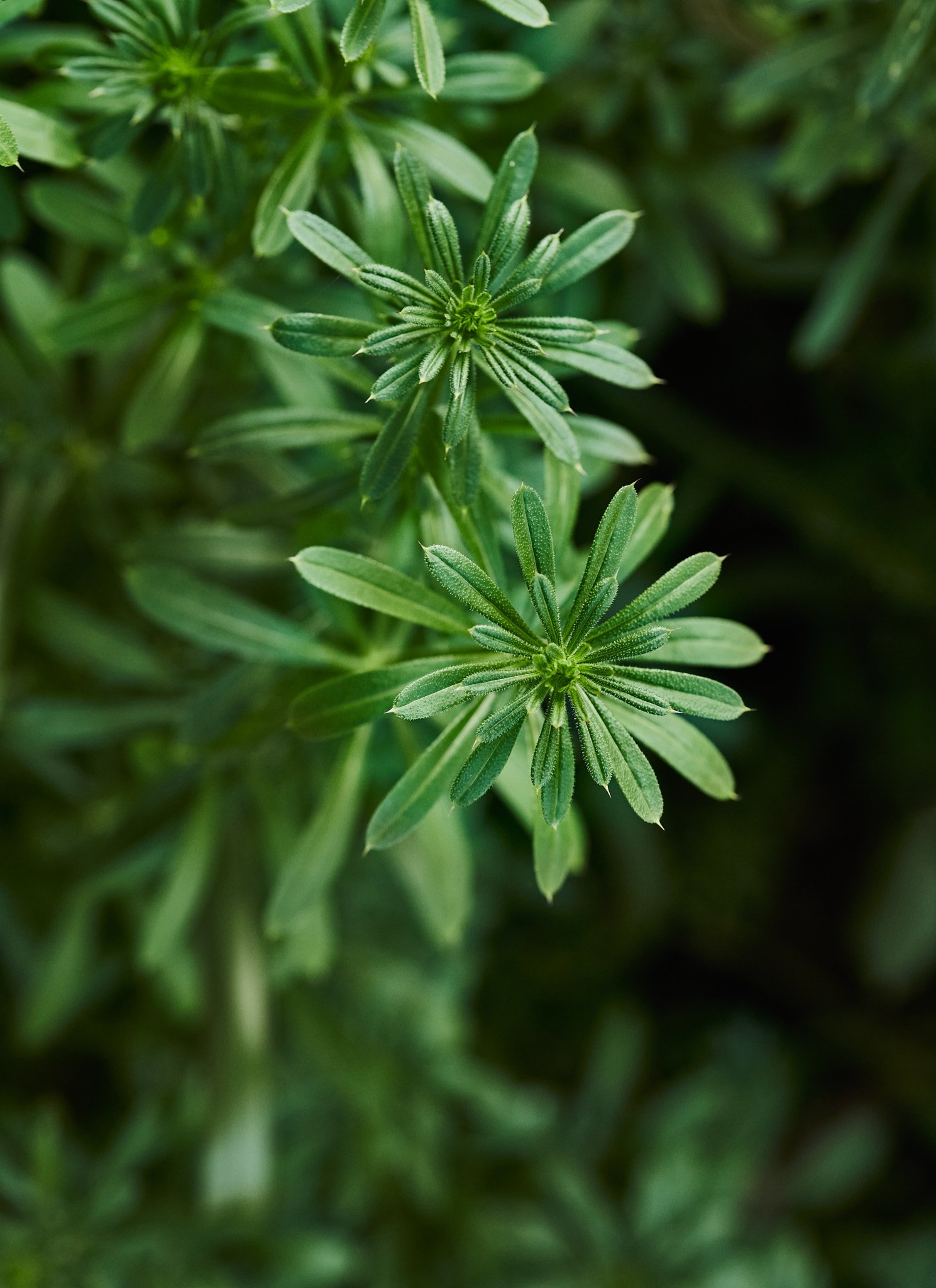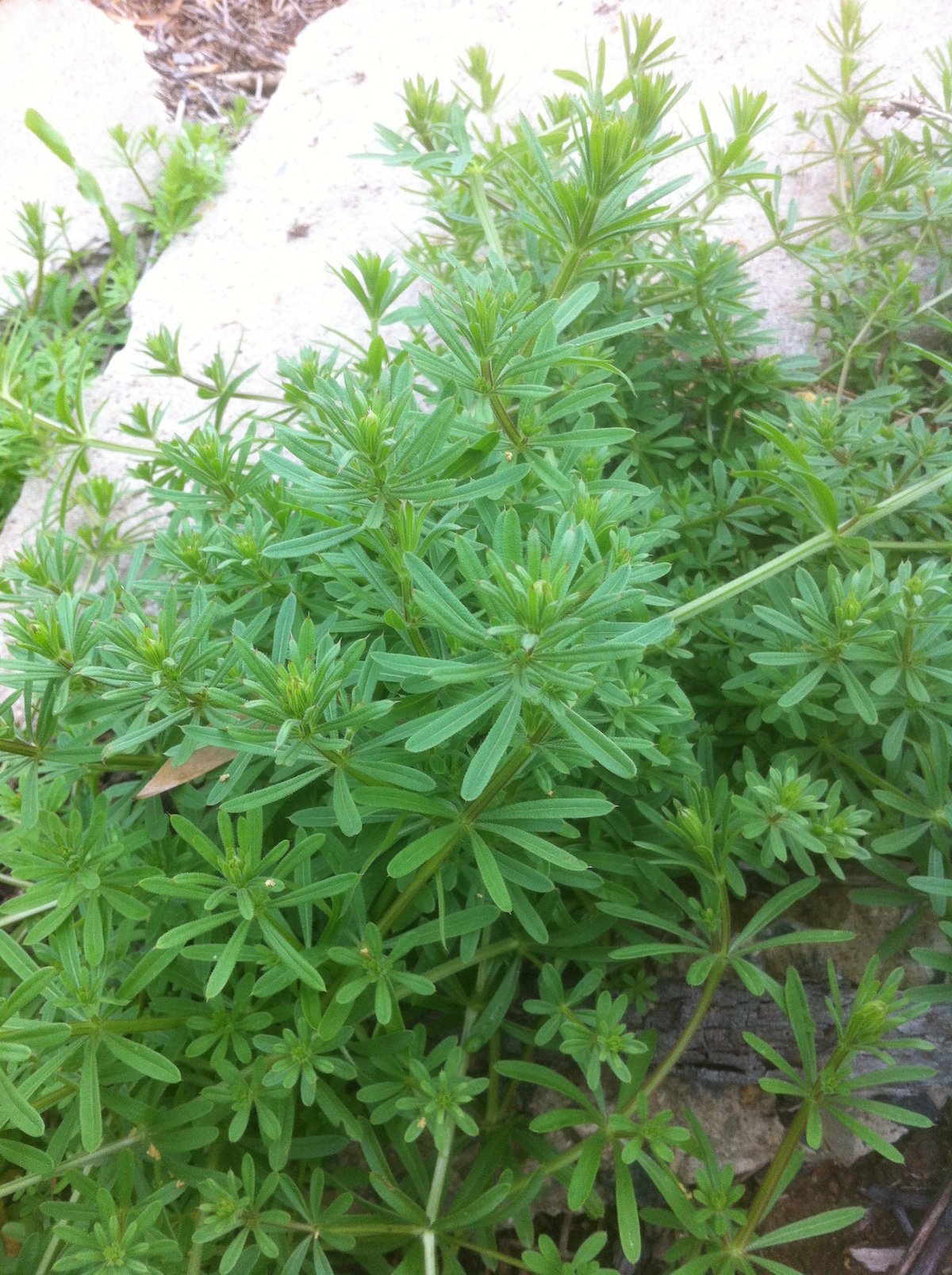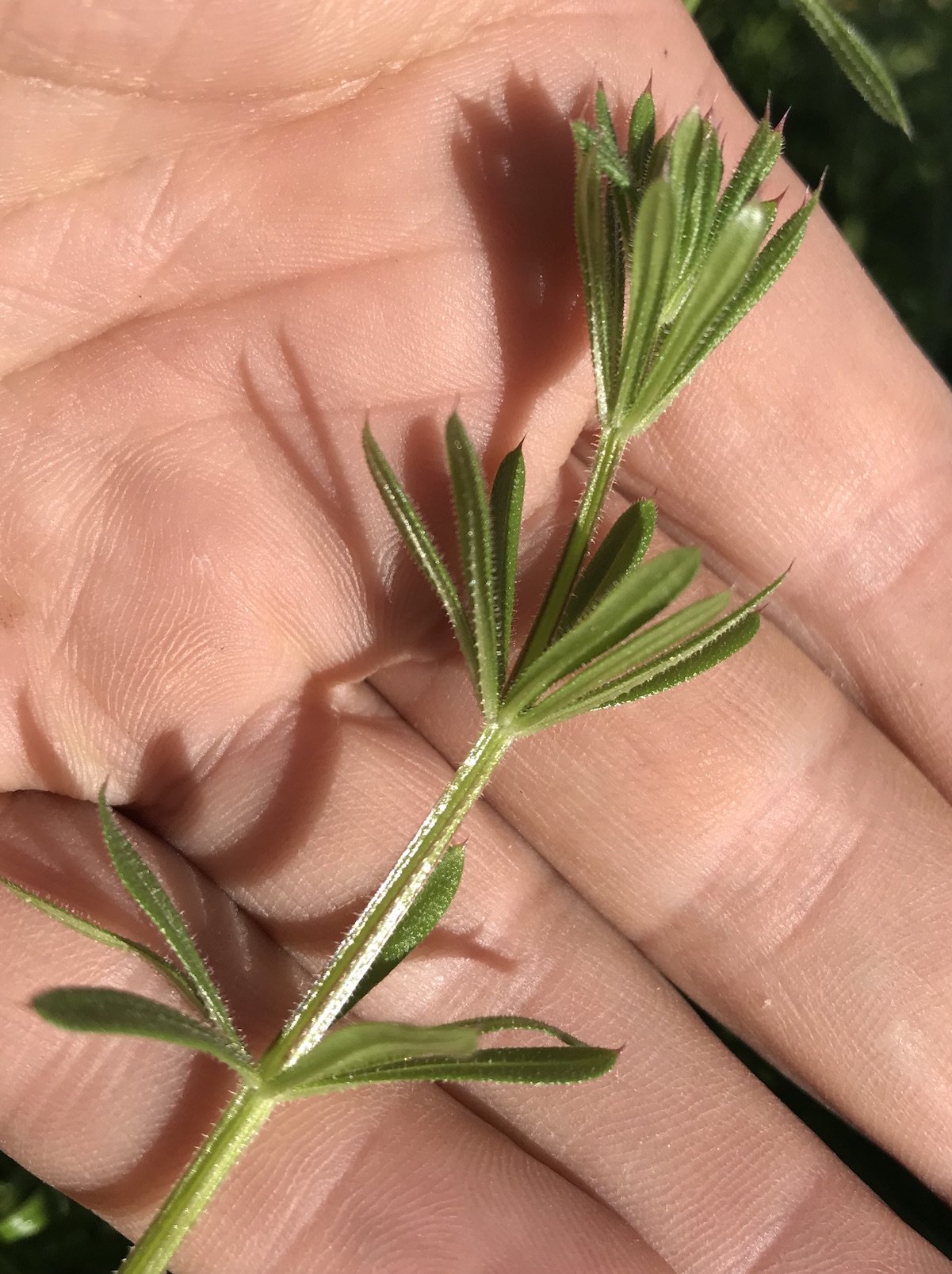Cleavers, they stick to you and you can eat them too
Cleavers - Galium aparine
The story goes that this is the plant that sparked the idea for Velcro strips! Engineered by nature with the ability to ‘hook’ onto any surface, cleavers or ‘sticky weed’ can be found from Brisbane to Adelaide, and has even popped up around Perth. It is rather fun to throw small parts of the plant at each other, and even from a distance, it promptly clings to any surface it touches, like your clothes, your hair or even your skin!
Go on, find it, fling it and get hooked on the sticky magic of cleavers.
Image by Mirra Whale
Identification features
Cleavers are a bright-green annual rambler that climb over other plants, forming sprawling mats, up to several metres wide. The leaves sprout in clusters of six to eight, forming a circle around the nodes. The leaves are lance-like in shape, 20–80 millimetres long and up to 10 millimetres wide.
The stalks are angular; usually square in profile, very fragile and branched, and 2–4 millimetres thick. The whole plant is covered with tiny hooks that cling to your clothes as you brush past them.
The flowers are 1–2 millimetres wide and white in colour, developing into bristly seed pods, which are 3–6 millimetres across and divided into two chambers.
The seeds are round and rough, about 2–3 millimetres in size.
How to eat cleavers
This plant is very beneficial, yet quite hard to eat, as it is stringy, bitter and bristly. The best part of the plant is the seeds, which can be collected rather quickly – and in quantity – by using a cloth, as the seeds will stick to the fabric. The seeds need only a little drying before being lightly roasted; although they taste very similar to coffee, they have the healthy properties of a tonic as opposed to being a stimulant. A decoction using the whole dried plant results in a drink similar to black tea. Young shoots are good too if cooked in soups or added to casseroles.
Medicinal qualities of cleavers
As medicine cleavers have a long history of domestic medicinal use and is widely prescribed by modern herbalists. As an ingredient for medicines, the plant is harvested as it comes into flower and can be used fresh or dried. It is administered both internally and externally in the treatment of a wide range of ailments; for example, as a poultice for wounds, ulcers and many other skin problems; as a decoction for insomnia; and in cases where a strong diuretic is beneficial. The plant is often used as part of a spring tonic drink, along with other herbs like chickweed and dandelion.
Where to find cleavers
The plant is a rambler and it is common to see infestations in unkept corners of your park or down the creeks on farms. Cleavers prefer shady and wet soils, so if usually found under trees. In Australia, it is found all over New South Wales, Victoria and Tasmania but also in southern Queensland, southern South Australia and southwest Western Australia, see the map. It is an annual plant growing rapidly in early springs after rain to then dying off after the fruiting in autumn.
Cleavers in folklore
In Europe, the plant is also known as bedstraw as the dried, matted foliage of the plant was once used to stuff mattresses. Several of the bedstraws (cleavers) were used for this purpose, due to the fact that the clinging hairs cause the branches to stick together, which enables the mattress filling to maintain a uniform thickness. AND It is said that using this plant as a vegetable has a slimming effect on the body! Slim as a cleaver!
Further readings
Plant for a future > A feature page for cleavers
Wikipedia > On cleavers
Science Direct > A pharmaceutical overview of the plant
National Library of Medicine > Scientific evidence of cleavers as a topical remedy for skin infections

